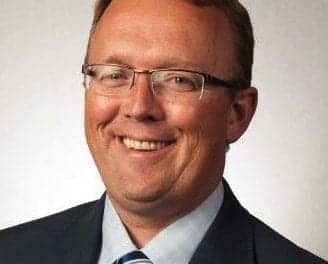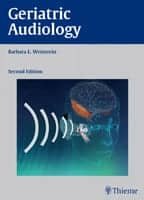Blog | Opinion
To offer the best hearing care possible, neurotologists or otologists, audiologists, and hearing instrument specialists should form into a hearing care group that makes the most of the expertise of each of the three professions involved. If you put the best of these three specializations together in one group, the patient will benefit from the strengths of all three disciplines and won’t have to go to specialists in three different locations. This idea has been attempted in the past, but the results have been mediocre at best—often because egos have gotten in the way.
However, if you get the right group of professionals together in one place who foster a mutually respectful culture, each has the chance of performing at the highest level while providing comprehensive services, products and devices—the perfect formula for a one-stop hearing care resource that would be difficult to find anywhere else.
Learning from the Best: Taking a Lesson about Perfection from Golf History
Growing up, I had the opportunity to spend a lot of time with two of the greatest golfers who ever lived: my father, Jug McSpaden, and his best friend and my godfather, Byron Nelson. Byron Nelson was one of only two players in history to average below 70 for 100 consecutive golf tournament rounds—he generally shot around 69, which is about what Tiger Woods shot in his prime before they started “Tiger-proofing” courses. My father was the first pro to shoot 59 in a tournament on a par 71 course (Brackenridge Park Golf Club in San Antonio) while playing with Nelson, Paul Runyan, and Ben Hogan. That score has been tied only 6 times in the history of PGA play. In fact, when they asked my father how he shot a 59, he answered, “Well, I missed the putt for 58.” Being a wise-ass runs in our family.

All good golfers have confidence, but golf in particular has a way of punishing those with too big an ego. I would suggest that this applies to most other disciplines, as well. What has happened in the past in hearing healthcare when we have tried to put the three hearing care professionals together in one group is that all the egos involved were so large they got in the way of each other. Instead of each professional doing his or her best to get the optimum outcome for the patient, they focused on who was the biggest fish in the pond or the most important.
Providing good hearing care isn’t about that. It is about making sure that, when patients come to your group, they get the best possible care from each professional on the team and learn how to succeed with their hearing treatment and hearing solution. The group should be about using all the clubs in the bag—all their unique skills—to their greatest potential.
The Roles of the Neuro-otologist and Audiologist
Neurotologists, otologists, and ENTs are experts at diagnosing the “what” of the patient’s problem. In other words, the otologist deciphers a patient’s symptoms and tells the patient what is wrong and what needs to be done. The “neuroaudiologist” or audiologist, on the other hand, is concerned with the “where” of the patient’s problem, or where in the auditory system the lesion or hearing loss is occurring.
The “neuroaudiologist” needs to know the anatomy of the auditory system very well—how a sound hits the eardrum on one side and travels through the entire ear system from the outer ear to the middle ear, into the cochlea or inner ear, and back into the middle ear. The audiologist must be familiar with how the cochlea works with the hair cells and nerve fibers, the anatomy involved in the entire hearing process, and how all that affects a patient’s hearing.
Both the otologist and audiologist need to know that there is one thing that can cause hearing problems for many people, and this is diabetes. It is important when gathering a Family History or Patient History that the experts determine if a patient has diabetes, or if it runs in the family. If it does, it is very likely affecting the patient’s hearing, resulting in a high frequency hearing loss (or a low-frequency loss that falls off at the high end). The more uncontrollable or uncontrolled the diabetes is, the more serious the patient’s hearing loss will be. If the patient doesn’t have diabetes or symptoms of diabetes, that can be eliminated as a source of the hearing problem.
If the patient has a normal hearing loss with hearing falling off and getting worse as time goes on, especially into the mid ranges or higher ranges, then the patient has a typical sensorineural hearing loss. On the other hand, if the patient has a low frequency rising hearing loss that rolls off in the middle frequencies and then falls in the high frequencies, this could indicate a central auditory processing problem that has to do with how he hears, and also what he hears. The trick is not necessarily hearing it all, but understanding it all.
Once the audiologist determines that the signal has gone in, and whether there is diabetes, head trauma, a history of stroke, or some other issue that may be the underlying cause of the hearing loss, then he or she knows to expect if this is a central auditory processing problem or not. The audiologist determines where in the auditory system the patient is having a problem—if the patient has binaurality or localization, for example. It is the audiologist who will use the hearing tests and behavior the patient reports (ie, understanding speech or hearing in the high frequencies) to figure out the type of hearing loss.
The audiologist tells the physician where the problem is. If the audiologist finds XYZ, then indicates where the hearing problem or lesion is most likely to be. This ability to locate the hearing loss in the anatomy and also identify the type of the hearing loss is a unique skill of the audiologist. The audiologist is not telling the physician what the problem is, but where it is. The physician can take that information and decide what the problem is, based on its location in the auditory system.
The Role of the Hearing Instrument Specialist
The third member of the team is the hearing instrument specialist (HIS). For some reason, hearing instrument specialists are sometimes not considered to be “on the same level” as audiologists and ENTs. The truth of the matter is, the HIS ties everything together. The HIS understands psychoacoustics, the acoustics of audition, loudness, perception of sound, and processing of phonemes through hearing aids. The HIS is the pro on the team who programs the hearing aid, and 90% of the problems with most hearing aids are based on how they are programmed, how they are tuned to achieve a clear intelligible signal in a variety of environments, and the comfort of the devices (physically and acoustically).
In order for HISs to help patients, they need to understand human speech. They need to instruct the patient to read aloud with their new hearing instrument. The reason is that the patient needs to listen for different sounds with the new aid. There are 26 letters in the English language, but there are 44 phonemes. For example, my dog’s name might be “Fido” or might be “Phydeaux.” Patients need to use, and listen to, those 44 phonemes through the new hearing aid to be able to assign meaning to what is said, and to be able to hear and understand all of these in various situations.
The HIS takes the patient’s audiogram or physician’s report, and then with the patient helps decide the type of hearing aid that should be tried to help a patient with the particular hearing problem. It doesn’t matter if the hearing aid is a BTE, or an ITC, ITE, or IIC; the trick is figuring out what kind of information the patient can receive with the hearing aid. It’s the hearing instrument specialist’s job to give patients the correct hearing aid for their individual needs and to teach them how to get the most out of the hearing aid.
An HIS will tell the patient: I’m going to teach you the steps to follow so you get the most out of your hearing aid. Following these steps is necessary to learning how to best use the aid. The patient needs to understand from the HIS that every hearing aid will have a different acoustic response, so it takes practice to learn with a new aid. This is not something you were born knowing, so reading aloud with a new hearing instrument is critical. And it’s not practice that makes perfect; it’s doing the right things—or “perfect practice”—that makes perfect. That’s how you get the most out of the hearing aid.
If the HIS works one-on-one, week to week with the patient for a month, and then works with the patient and partner for the second month, and if the patient reads aloud daily, then the patient’s ability to understand the voices of strangers will go up 20%-40%.
Special Issues in Providing “Perfect” Hearing Care
An additional issue with hearing aids that everyone on the care team needs to understand is “recruitment,” or the perceived loudness of the hearing aid even when applying only small amounts of gain above threshold. Recruitment is different for every patient. If a patient reports that things sound uncomfortably loud with a new hearing aid, the audiologist may be able to interpret the problem as recruitment. The audiologist will notify the HIS to get the hearing aid adjusted to correct the problem so it doesn’t stimulate recruitment for that patient.
Everyone on the team has to make sure the patient’s hearing is treated appropriately and optimally. That is, the patient hears the signal loud enough to understand clearly, and loud enough to distinguish one phoneme from the other, and also can distinguish voiced and unvoiced consonants and unusual combinations of consonants. What patients perceive acoustically depends on how they hear it. If they hear things clearly enough, they are usually satisfied with their hearing aid.
Collaborating on Aural Rehabilitation in Audiology
Something must be said about the rehabilitative role the audiologist performs as part of the hearing healthcare team. In addition to providing hearing testing and diagnostics, the audiologist should also be helping patients with aural rehabilitation. This is where the combined skills and training of the audiologist and the hearing instrument specialist are truly complementary, because both pros can be involved in providing long-term rehabilitative services for patients. In other words, while the HIS focuses on adjusting the hearing instrument as needed and teaching the patient how to use the instrument, the audiologist can provide “auditory training,” speech reading (lip reading), and specialized strategies/exercises for optimal hearing. As explained by Maurice Miller in his article in the March 2015 issue of The Hearing Review, only a small percentage of audiologists are currently applying their skills in rehabilitative audiology for patients, and this audiology service is necessary to providing comprehensive care.

For too long, those of us in the hearing healthcare industry have allowed our egos to get in the way. We have worried more about our own professional identities than about the ultimate needs of the patient. Each of us needs to be comfortable enough in our own ego to focus on helping the patient. It is time to work together to form a collaborative elite team of hearing health specialists and quit handicapping ourselves. As with great golfers, isn’t it time to forget all the plugged lies and turf battles, and instead start appreciating and using all the clubs in our bag?
Jay B. McSpaden, PhD, is an audiologist and hearing instrument specialist who has retired from private practice, but continues to write about hearing healthcare.
Photo credit: © Niserin | Dreamstime.com; © Andreypopov | Dreamstime.com






Thanks for your article.